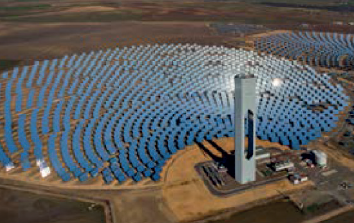Climate and energy security policies in nearly 140 countries have played a crucial role in making renewables cost-competitive with fossil-fired power plants, indicates the most recent “Renewables” analysis and forecast from the International Energy Agency.1 Given the suggestion that 5500 GW of new renewable capacity could become operational by 2030, Fugitive Emissions Journal decided to see how the flow control sector is facilitating green energy.
By KCI Editorial
The report from the International Energy Agency (IEA) is generally encouraging about the future of renewable energy yet does not ignore the many challenges ahead. For example, IEA notes that since ending feed-in tariffs in 2020, China’s cumulative solar PV capacity has almost quadrupled and wind capacity has doubled, driven by cost competitiveness and supportive policies. Similarly, the European Union and the United States were both forecast to double the pace of renewable capacity growth between 2024 and 2030 (NB: report dated October 2024), with India seeing the fastest rate of growth among large economies.
However, areas requiring attention include the need for policy improvements to facilitate the exploitation of as-yet untapped renewables, strengthening of grid infrastructure, and the requirement for policy makers to create clear, long-term targets.

Renewable Energy Types
According to JustEnergy2 there are seven basic types of renewable power: solar, wind, hydroelectric, geothermal, ocean, hydrogen and biomass. Their website gives a good overview of the benefits and limitations of each type. Hence hydroelectric power is said to be very versatile and can be generated using both large scale projects, like the Hoover Dam, and small-scale projects like underwater turbines and lower dams on small rivers and streams. On the downside, storage systems may need fossil fuel to pump water, whilst hydroelectric installations can disrupt waterways and negatively affect the habitat of animals and fish that that live in them.
Valves for Renewables
Desk research shows that many valve makers and distributors offer valve portfolios that cover multiple areas of the energy sector, including renewable applications.
Indeed, in a January 2025 news item, Velan3 announced that “…, the company will continue as a leader in flow control solutions for clean energy and other industrial sectors driven by its strong brand, high-quality products and a superior market positioning combined with expertise in demanding applications. Our activities will also benefit from robust momentum in the clean energy sector, including nuclear, which is undergoing a multi-year growth cycle throughout the world. We remain well-positioned in this market with our proprietary valve offerings for small modular reactors, along with our global installed base of products at existing nuclear reactors. In addition, we are firmly entrenched in other markets buoyed by global energy transition trends.”
Meanwhile, IMI offers (amongst others) flow control solutions to regulate and optimise plant operation in the molten solar and concentrated solar power sector, as well as flow control solutions to help maintain the reliability of plant components in biomass plants powered by fuels such as wood chips, straw, and waste.
The need for flow control equipment that can withstand harsh environments was amply described by Andreas Pischke (Valmet) in 2021, when he penned a text on valves for geothermal energy.5 Noting that the US is a world-leader in terms of geothermal electricity generation, he describes challenging conditions such as the need to contend with brine and steam at temperatures from 100°C to 370°C, as well as high pressures, flashing and silica scaling. He noted that Valmet’s control valve range can be deployed in areas including separator level control and around the turbine.
Finally, a 2023 article by Bray’s William Powers on “The Hydrogen Economy and the Role of the Valve Industry”6 gives useful insights into the applicability of various valve types.
For example, he notes that a butterfly valve “has many pros inherent in its design for hydrogen applications. Typically, they offer the lowest cost of ownership, the smallest envelope compared to any other valve type, and low fugitive emission capabilities. In terms of the limitations, butterfly valves are prone to cavitation and are limited in pressure drop capabilities due to the disc being in the flow path. Butterfly valves can be utilized in switch valve applications, desulphurization feed, and hydrogen liquefaction.”
References
- Renewables 2024 – Analysis – IEA
- 7 Types of Renewable Energy: The Future of Energy
- Velan Announces Major Strategic Initiatives | Velan
- Biomass and Molten Solar | Flow Control Valves
- Why do we need valves for geothermal energy? | Valmet
- The Hydrogen Economy and the Role of the Valve Industry | Bray


